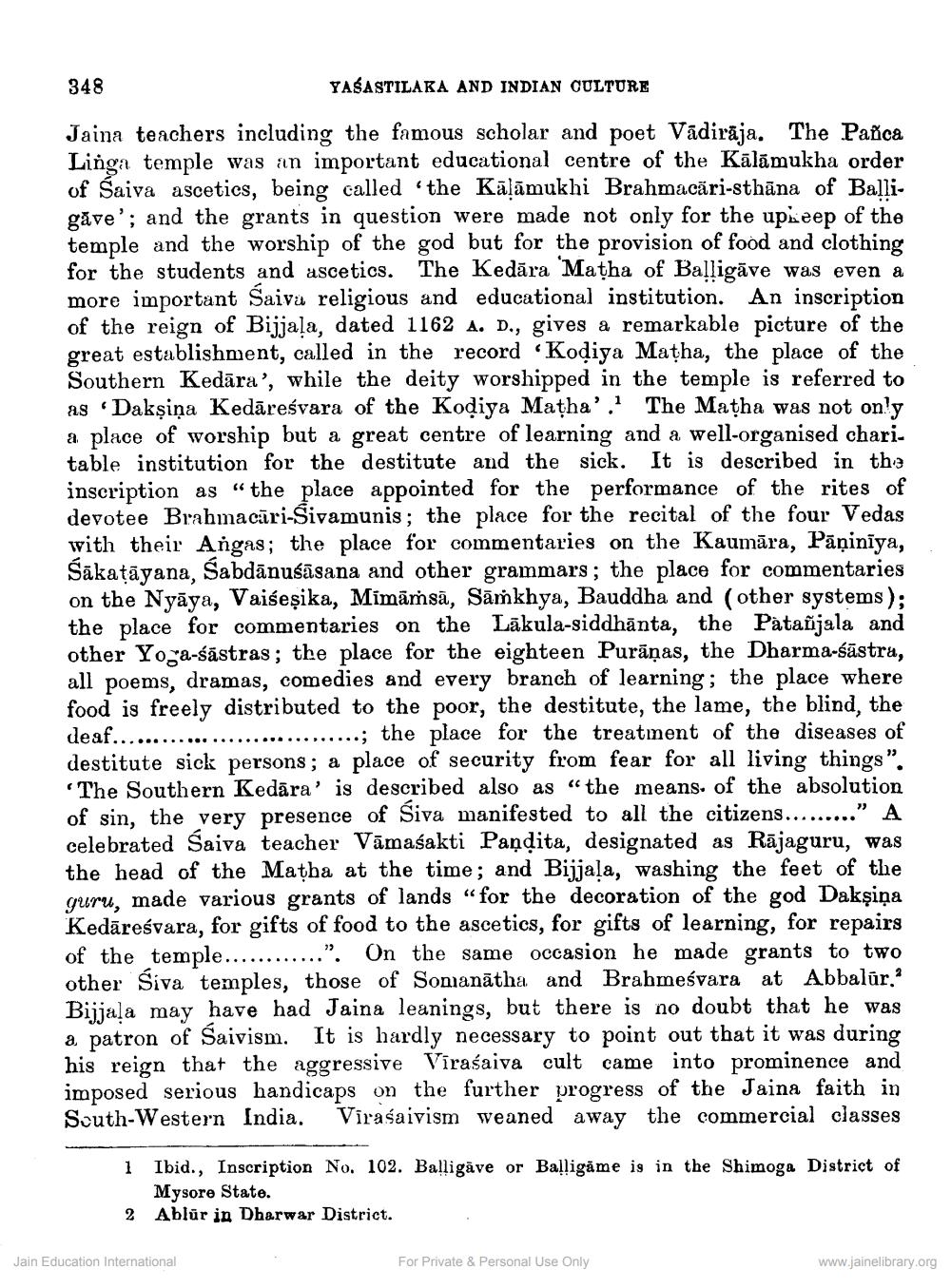________________
348
YASASTILAKA AND INDIAN CULTURE
Jaina teachers including the famous scholar and poet Vâdirāja. The Pañca Linga temple was an important educational centre of the Kālāmukha order of Saiva ascetics, being called the Kālāmukhi Brahmacäri-sthāna of Balligăve'; and the grants in question were made not only for the upkeep of the temple and the worship of the god but for the provision of food and clothing for the students and ascetics. The Kedăra Matha of Balligāve was even a more important Saiva religious and educational institution. An inscription of the reign of Bijjala, dated 1162 A. D., gives a remarkable picture of the great establishment, called in the record 'Kodiya Matha, the place of the Southern Kedāra', while the deity worshipped in the temple is referred to as · Dakşiņa Kedāreśvara of the Kodiya Matha'. The Matha was not only a place of worship but a great centre of learning and a well-organised charitable institution for the destitute and the sick. It is described in the inscription as “the place appointed for the performance of the rites of devotee Brahmacäri-Sivamunis; the place for the recital of the four Vedas with their Angas; the place for commentaries on the Kaumāra, Pāṇinīya, Śākatāyana, Sabdānuśāsana and other grammars; the place for commentaries on the Nyāya, Vaiseșika, Mimāṁsā, Sāṁkhya, Bauddha and (other systems); the place for commentaries on the Lākula-siddhānta, the Patañjala and other Yoa-śāstras; the place for the eighteen Purāņas, the Dharma-śāstra, all poems, dramas, comedies and every branch of learning; the place where food is freely distributed to the poor, the destitute, the lame, the blind, t deaf........
.........; the place for the treatment of the diseases of destitute sick persons; a place of security from fear for all living things". 'The Southern Kedāra' is described also as “the means of the absolution of sin, the very presence of Śiva manifested to all the citizens........." A celebrated Saiva teacher Vāmasakti Pandita, designated as Rājaguru, was the head of the Matha at the time; and Bijjala, washing the feet of the guru, made various grants of lands “for the decoration of the god Dakşiņa Kedāreśvara, for gifts of food to the ascetics, for gifts of learning, for repairs of the temple............". On the same occasion he made grants to two other siva temples, those of Sonianātha and Brabmeśvara at Abbalür. Bijjala may have had Jaina leanings, but there is no doubt that he was a patron of Saivism. It is hardly necessary to point out that it was during his reign that the aggressive Viraśaiva cult came into prominence and imposed serious handicaps on the further progress of the Jaina faith in South-Western India. Virasaivism weaned away the commercial classes
1 Ibid., Inscription No. 102. Balligāve or Balligame is in the Shimoga District of
Mysore State. 2 Ablur in Dharwar District.
Jain Education International
For Private & Personal Use Only
www.jainelibrary.org




